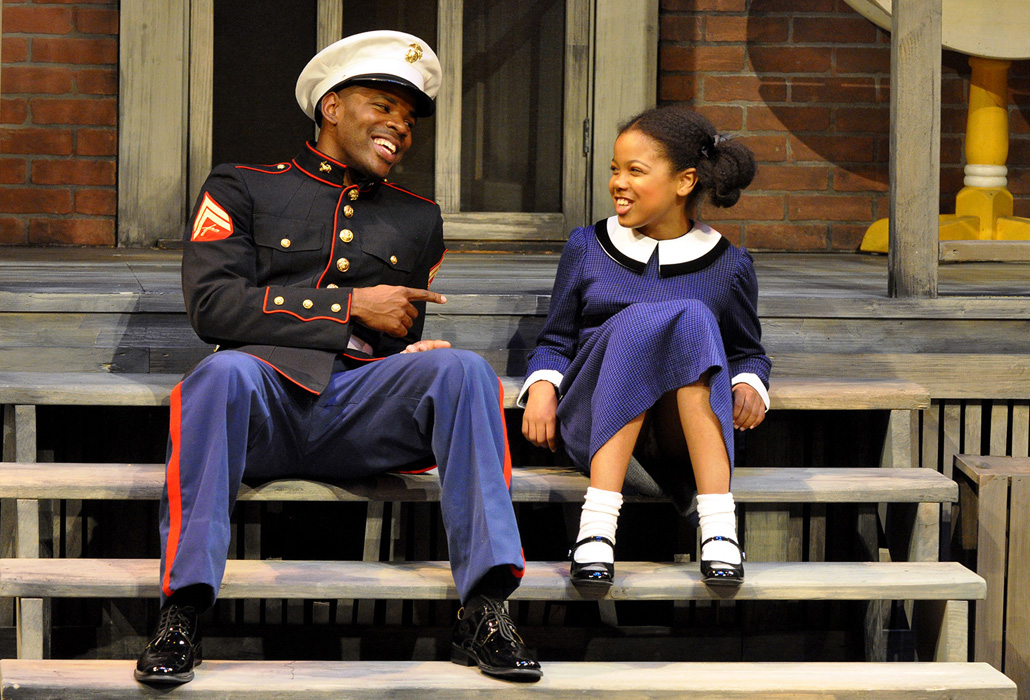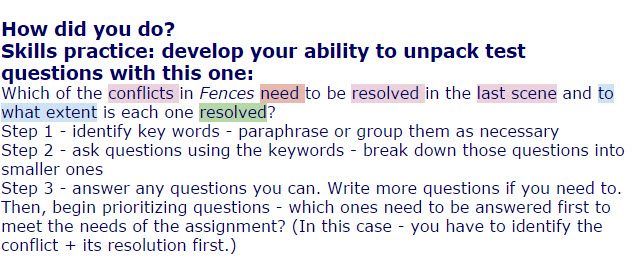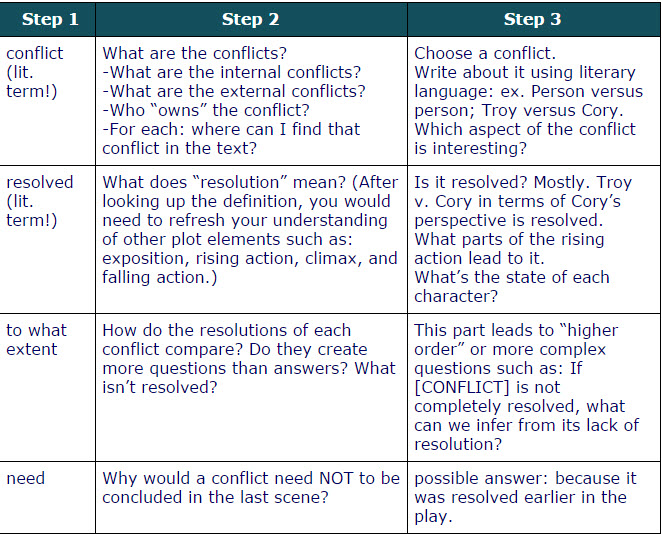Fences: Act II, Scene 5
 |
Reading: Read Act II, Scene 5
Link to text here.Stage Directions: It's 1965, eight years have passed since that first rollicking, playful Friday night on the porch. This morning, the characters assemble for Troy's funeral. The garden plot, anxiously poked and examined by Raynell, suggests planting, growth, rebirth, and starting over again. What are some aspects of the family that might need to be grown or nurtured?
Cory, now a Marine corporal, returns home for Troy's funeral, apparently for the first time in seven years, putting him at about twenty-four years old. He reconnects with his sister, Raynell, who was an infant when he left home.
The last time he was on stage, he was angry and defiant. His solution to being fenced in by his father was to choose a military career. He went from one metaphoric battlefield to a real one.
The last scene of the last act: When the play and the audience arrive at the final scene, the audience has expectations for answers. Throughout Fences, August Wilson created tension around various topics and situations to build conflicts. While the end of a story concludes the play, sometimes conflicts remain unresolved. By definition, the RESOLUTION of a play’s main conflict occurs when that conflict has been concluded or solved. As you begin Scene 5, ask yourself: how many conflicts have been resolved? What’s left?
Vocabulary note The root of resolution comes from “solut” which means to loosen. If resolution, though, means to end things or wrap them up… what becomes loosened or untied? Learn more about solut and solv* here -- scroll down to see how the roots in action! “Solv” is a root that also means to loosen. |
Skills practice: develop your ability to unpack test questions with this one:
Which of the conflicts in Fences need to be resolved in the last scene and to what extent is each one resolved?
Step 1 → identify the keywords in the question
Step 2 → make questions about them?
Step 3 → if this were an essay question, you’d probably also need to narrow them down and your teacher would have a follow up statement or question to that one such as: Choose one and trace that conflict’s rising action through its climax and resolution. To what extent is it resolved? How do literary element such as motifs and/or themes support its resolution?
How did you do? If you want to see one way to unpack that question, scroll to the bottom of the page.
Notes on the Text:
(page 96) CORY: "I'm not going to Papa's funeral." Why might Cory avoid going to the funeral?
(page 97) ROSE: "...I do know he meant to do more good than he meant to do harm..." Rose's monologue explains, from her perspective, the origins and history of her relationship with Troy. Be sure to take notes on this part. What do we learn about Rose's character here based on her insight into Troy’s motivations?
(page 99) RAYNELL: "Did you know Blue?" Troy entertained Raynell with the same songs and stories (history really) that he shared with Rose, Bono, Lyons, and Cory. When Cory sings to Raynell, and then they sing together, can we infer from Cory's actions that he's forgiven his father or least "put aside" his anger, and instead celebrates, with Raynell, the best of what was inside his father?
How might we understand that question knowing that the song was also one of Troy’s story--this time about loyalty, but also about a dog who had to be chased away to get it to return.


NEXT: Lesson 3 Writing